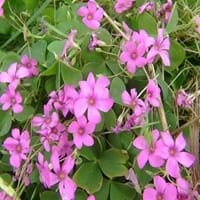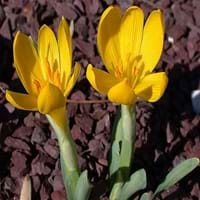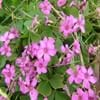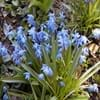Life Span
Perennial
Perennial
Type
Bulb or Corm or Tuber
Bulb or Corm or Tuber
Origin
South America, Argentina, Brazil
Southern Europe, Mediterranean, Turkey, Iran, Central Asia, Western Asia
Types
Oxalis acetosella
Oxalis adenophylla
Oxalis albicans
Oxalis alpina
NA
Habitat
Deep, Hardwood forests
countryside, Rural areas
USDA Hardiness Zone
7-9
Not Available
AHS Heat Zone
8-6
Not Available
Habit
Clump-Forming
Clump-Forming
Flower Color
Pink, Light Pink, Rose
White, Yellow
Flower Color Modifier
Bicolor
Bicolor
Fruit Color
Tan
Not Available
Leaf Color in Spring
Green, Light Green
Green, Gray Green
Leaf Color in Summer
Light Green
Light Green
Leaf Color in Fall
Several shades of Green
Several shades of Green
Leaf Color in Winter
Light Green
Light Green
Leaf Shape
Obcordate
Strap shaped
Plant Season
Spring, Summer, Fall
Spring, Fall, Winter
Sunlight
Full Sun, Partial Sun
Full Sun
Growth Rate
Medium
Medium
Type of Soil
Loam, Sand
Loam, Sand
The pH of Soil
Acidic, Neutral
Neutral, Alkaline
Soil Drainage
Well drained
Well drained
Bloom Time
Spring, Late Spring, Early Summer, Summer, Late Summer, Early Fall, Fall
Early Spring, Late Summer, Early Fall, Fall, Late Winter
Tolerances
Drought
Drought
Where to Plant?
Ground
Container, Ground, Pot
How to Plant?
Corms or bulbs, From Rhizomes
By dividing rhizomes, tubers, Corms or bulbs, Offsets
Plant Maintenance
Medium
Medium
Watering Requirements
Needs more water during establishment, Water Deeply, Water in morning to avoid prompting diseases
Average Water Needs, Do Not over Water, Requires regular watering
In Summer
Lots of watering
Lots of watering
In Spring
Moderate
Moderate
In Winter
Average Water
Average Water
Soil pH
Acidic, Neutral
Neutral, Alkaline
Soil Type
Loam, Sand
Loam, Sand
Soil Drainage Capacity
Well drained
Well drained
Sun Exposure
Full Sun, Partial Sun
Full Sun
Pruning
Cut or pinch the stems, Pinch Tips, Pinching, Remove damaged leaves, Remove dead branches, Remove dead leaves
Remove damaged leaves, Remove dead branches, Remove dead leaves
Fertilizers
All-Purpose Liquid Fertilizer, Apply N-P-K
All-Purpose Liquid Fertilizer
Pests and Diseases
Not Available, Red blotch
Cutworms
Plant Tolerance
Drought, Shade areas
Drought
Flower Petal Number
Single
Single
Foliage Texture
Medium
Fine
Foliage Sheen
Matte
Matte
Attracts
Not Available
Cutworms, Flies
Allergy
Not Available
poisonous if ingested
Aesthetic Uses
Beautification, Cottage Garden, Showy Purposes
Bonsai, Bouquets, Showy Purposes
Beauty Benefits
Not Available
Not Available
Environmental Uses
Air purification
Air purification
Medicinal Uses
Not Available
No Medicinal Use
Part of Plant Used
Flowers
Flowers
Other Uses
Not Available
Used as Ornamental plant
Used As Indoor Plant
No
No
Used As Outdoor Plant
Yes
Yes
Garden Design
Container, Groundcover, Mixed Border, Rock Garden / Wall, Wildflower
Container, Cutflower, Lawns and Turf, Mixed Border, Rock Garden / Wall, Wildflower
Botanical Name
OXALIS articulata
STERNBERGIA
Common Name
Sorrel, Wood Sorrel
Sternbergia
In Hindi
sorrel
Sternbergia
In German
Sauerampfer
Sternbergia
In French
oseille
Sternbergia
In Spanish
alazán
Sternbergia
In Greek
οξαλίδα
Sternbergia
In Portuguese
alazão
Sternbergia
In Polish
szczaw
Sternbergia
In Latin
varii,
Sternbergia
Phylum
Tracheophyta
Tracheophyta
Class
Magnoliopsida
Magnoliopsida
Order
Oxalidales
Asparagales
Family
Oxalidaceae
Amaryllidaceae
Clade
Angiosperms, Eudicots, Rosids
Angiosperms, Monocots
Tribe
Not Available
Not Available
Subfamily
Not Available
Amaryllidoideae
Properties of Sorrel and Sternbergia Lutea
Wondering what are the properties of Sorrel and Sternbergia Lutea? We provide you with everything About Sorrel and Sternbergia Lutea. Sorrel doesn't have thorns and Sternbergia Lutea doesn't have thorns. Also Sorrel does not have fragrant flowers. Sorrel has allergic reactions like Not Available and Sternbergia Lutea has allergic reactions like Not Available. Compare all the properties and characteristics of these two plants. Find out which of these plant can be used as indoor plant. If you are interested to decorate your house and garden, find out aesthetic uses, compare them and select the plant which will beautify your surrounding. Along with beautification, try comparing medicinal and edible uses of Sorrel and Sternbergia Lutea and you can choose the plant having best and most benefits.
Season and Care of Sorrel and Sternbergia Lutea
Season and care of Sorrel and Sternbergia Lutea is important to know. While considering everything about Sorrel and Sternbergia Lutea Care, growing season is an essential factor. Sorrel season is Spring, Summer and Fall and Sternbergia Lutea season is Spring, Summer and Fall. The type of soil for Sorrel is Loam, Sand and for Sternbergia Lutea is Loam, Sand while the PH of soil for Sorrel is Acidic, Neutral and for Sternbergia Lutea is Neutral, Alkaline.
Sorrel and Sternbergia Lutea Physical Information
Sorrel and Sternbergia Lutea physical information is very important for comparison. Sorrel height is 15.20 cm and width 25.40 cm whereas Sternbergia Lutea height is 10.20 cm and width 7.60 cm. The color specification of Sorrel and Sternbergia Lutea are as follows:
Sorrel flower color: Pink, Light Pink and Rose
Sorrel leaf color: Green and Light Green
Sternbergia Lutea flower color: White and Yellow
- Sternbergia Lutea leaf color: Green and Gray Green
Care of Sorrel and Sternbergia Lutea
Care of Sorrel and Sternbergia Lutea include pruning, fertilizers, watering etc. Sorrel pruning is done Cut or pinch the stems, Pinch Tips, Pinching, Remove damaged leaves, Remove dead branches and Remove dead leaves and Sternbergia Lutea pruning is done Remove damaged leaves, Remove dead branches and Remove dead leaves. In summer Sorrel needs Lots of watering and in winter, it needs Average Water. Whereas, in summer Sternbergia Lutea needs Lots of watering and in winter, it needs Average Water.





